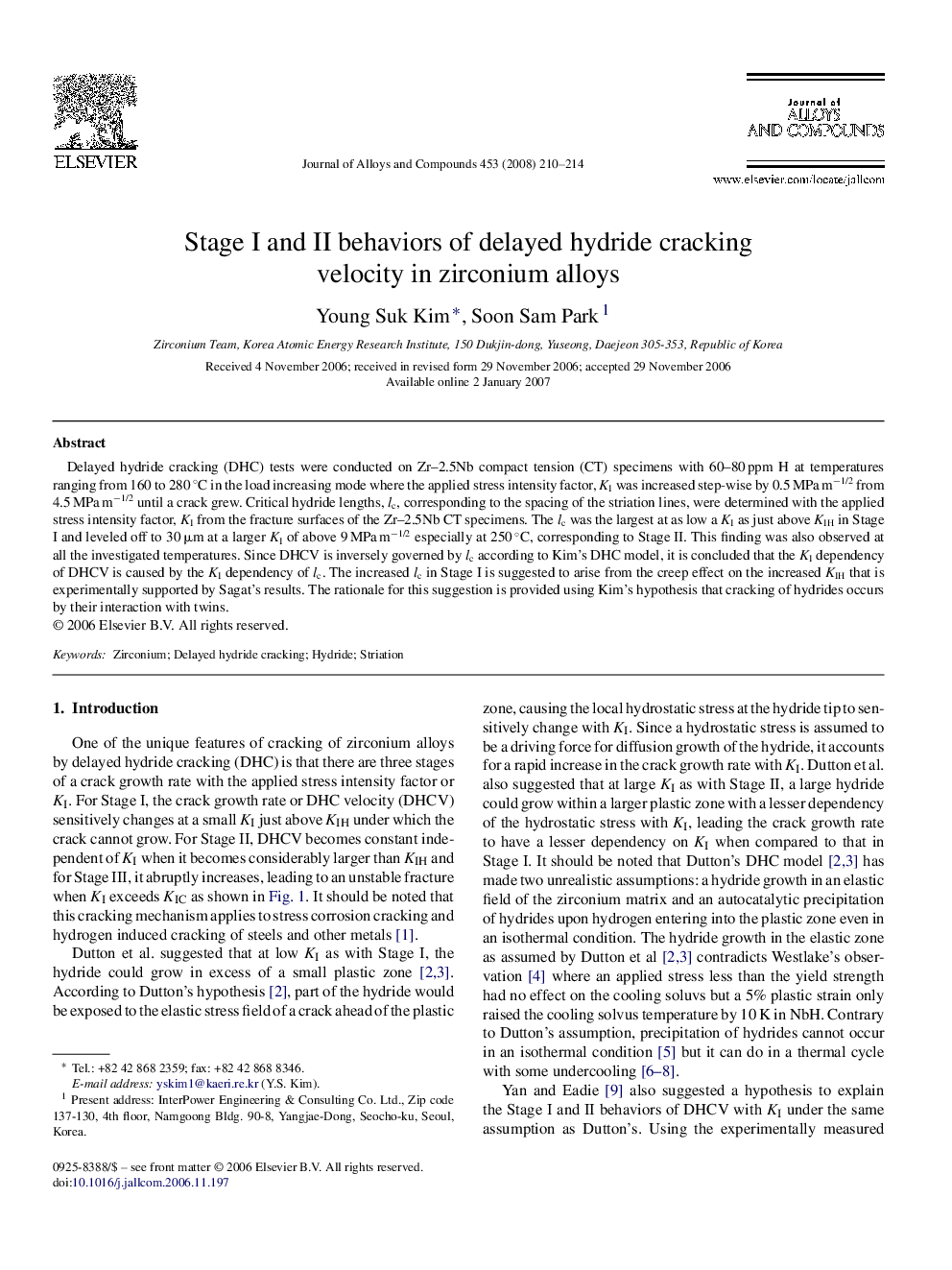| Article ID | Journal | Published Year | Pages | File Type |
|---|---|---|---|---|
| 1624879 | Journal of Alloys and Compounds | 2008 | 5 Pages |
Delayed hydride cracking (DHC) tests were conducted on Zr–2.5Nb compact tension (CT) specimens with 60–80 ppm H at temperatures ranging from 160 to 280 °C in the load increasing mode where the applied stress intensity factor, KI was increased step-wise by 0.5 MPa m−1/2 from 4.5 MPa m−1/2 until a crack grew. Critical hydride lengths, lc, corresponding to the spacing of the striation lines, were determined with the applied stress intensity factor, KI from the fracture surfaces of the Zr–2.5Nb CT specimens. The lc was the largest at as low a KI as just above KIH in Stage I and leveled off to 30 μm at a larger KI of above 9 MPa m−1/2 especially at 250 °C, corresponding to Stage II. This finding was also observed at all the investigated temperatures. Since DHCV is inversely governed by lc according to Kim's DHC model, it is concluded that the KI dependency of DHCV is caused by the KI dependency of lc. The increased lc in Stage I is suggested to arise from the creep effect on the increased KIH that is experimentally supported by Sagat's results. The rationale for this suggestion is provided using Kim's hypothesis that cracking of hydrides occurs by their interaction with twins.
